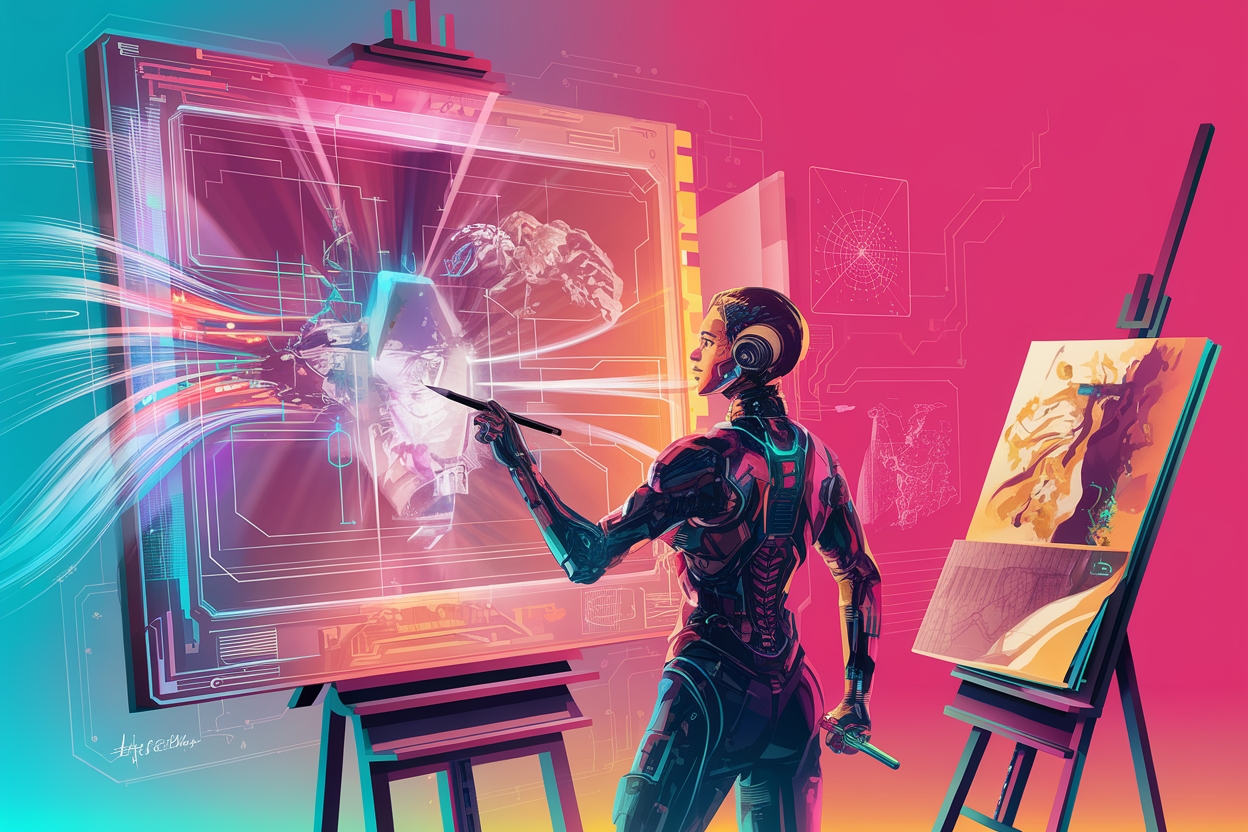Who Really Owns AI’s Creations?
Picture this: an artist stands before a canvas, brush poised. Except the brush is a keyboard, the canvas is a prompt on a screen, and the paint—the wild swirl of imagination—seems to come from something humming behind the scenes: an artificial intelligence model. Is it still the artist’s hand at work, or does credit go to the machine churning out the final image?
In a sweeping new report, the U.S. Copyright Office takes on exactly this question, grappling with whether AI outputs—everything from enchanting images to full-length novels—deserve copyright protection. Beneath the dense legal language lies a surprisingly human story: a centuries-old system built to reward genuine creativity is colliding with a technology that seems, on its glossy surface, to be capable of inventiveness all on its own.
The Evolution of Authorship
For centuries, the Copyright Clause in the U.S. Constitution has protected “authors” and their “writings.” But AI, of course, lacks anything resembling human creativity or motivation—no midnight bursts of inspiration, no emotional investment in a project’s success. Lawyers and judges have historically said that copyright belongs to works born of a person’s labor, not a machine’s. Think of camera technology: we protect the photographer who skillfully frames a shot, but not the lens itself. Now, the same logic is being applied to AI tools.
Those backing broader protection believe it might supercharge creativity—why not encourage the invention of new artworks by granting them the full range of legal shields? Others worry that bestowing copyrights on outputs that no human distinctly shaped could trigger a deluge of cluttered, low-effort AI content, overwhelming works painstakingly crafted by actual people. It’s not merely an abstract fear: many artists who make their living selling prints, for instance, now find themselves competing against an ocean of near-instant AI creations. The big question is how to balance progress with preserving an environment where human innovators still thrive.
Behind the Black Box
Despite the futuristic aura, AI creation can feel like rolling dice at a fancy casino. You might enter a detailed prompt—“a fantasy cityscape at sunset, with shimmering golden arches and drifting blimps overhead”—and get back something utterly unexpected, or repeated attempts might generate kaleidoscopes of variations. That element of unpredictability hints at why the Copyright Office is holding firm: generating a hundred images until you find one that appeals to you doesn’t necessarily match the human-level authorship required for legal protection.
Think of it like the difference between giving Michelangelo a block of marble (“Make me something beautiful”) and personally chipping away at the stone to reveal David’s features. The second scenario is undeniably your own creative labor. The first? That’s more akin to commissioning a piece—except Michelangelo here is a black box of algorithms that doesn’t care if you pay him or not.
When AI Is Just a Tool
All this doesn’t mean the artist is vanishing from the frame. In fact, many creators with disabilities or those seeking new ways to refine their process depend on AI tools for brainstorming or technical polish. A poet might ask a chatbot to check grammar or offer synonyms. A photographer might upload her snapshots to an AI-based platform that expertly adjusts color balances. These uses, the Copyright Office says, are no problem: if the technology merely assists, rather than replaces, the creative spark, the end result is still human expression.
In other words, if you hand-feed AI something you’ve created—say, a lovely drawing—and it adds shading or dimension at your command, then your original authorship remains intact. The final piece is still yours, at least for the new human-made elements that appear in it. AI can help you carve away unnecessary details or reorder paragraphs in a story, but you remain the sculptor shaping the marble.
Why It Matters
Critics warn of an “AI flood,” envisioning a marketplace so saturated with automated works that human effort gets lost in the noise. Others see fresh opportunities: shorter creative cycles, expansions in accessibility, and the possibility that new voices will emerge from communities once shut out of the creative industries. Whatever the outcome, the stakes extend far beyond legal codes and creative guilds.
This isn’t just about protecting the next best-selling novel or blockbuster movie. It’s about defining what we cherish in human creativity—and ensuring that future generations, armed with ever-more-powerful tools, can still reap the rewards of genuine ingenuity. For centuries, copyright law has provided that reward, recognizing the spark of imagination in the painter’s brushstroke or the poet’s careful line. AI challenges us to clarify just how brightly that spark must burn before the law honors it.
A Call to Reflect—and Act
So where do we go from here? For those harnessing AI as a tool, consider how much you’re contributing to what appears on the page. The deeper your hand in molding words or images, the firmer your claim to authorship becomes. Meanwhile, the conversation rages on about how societies want to reward creative acts in an era when machine output can mimic—or surpass—our wildest dreams.
We stand at a crossroads: Will the dawn of AI reinvigorate human creativity or dilute it? The Copyright Office’s stance suggests we should trust our longstanding principles, but it’s up to us—as creators, users, and citizens—to ensure the laws evolve wisely. Let’s not merely react to these changes; let’s shape them, championing a future in which human inventiveness thrives alongside (and sometimes with the help of) the most sophisticated tools we’ve ever built. After all, no matter how advanced our machines become, the human story—our story—is the one that ultimately animates them.
